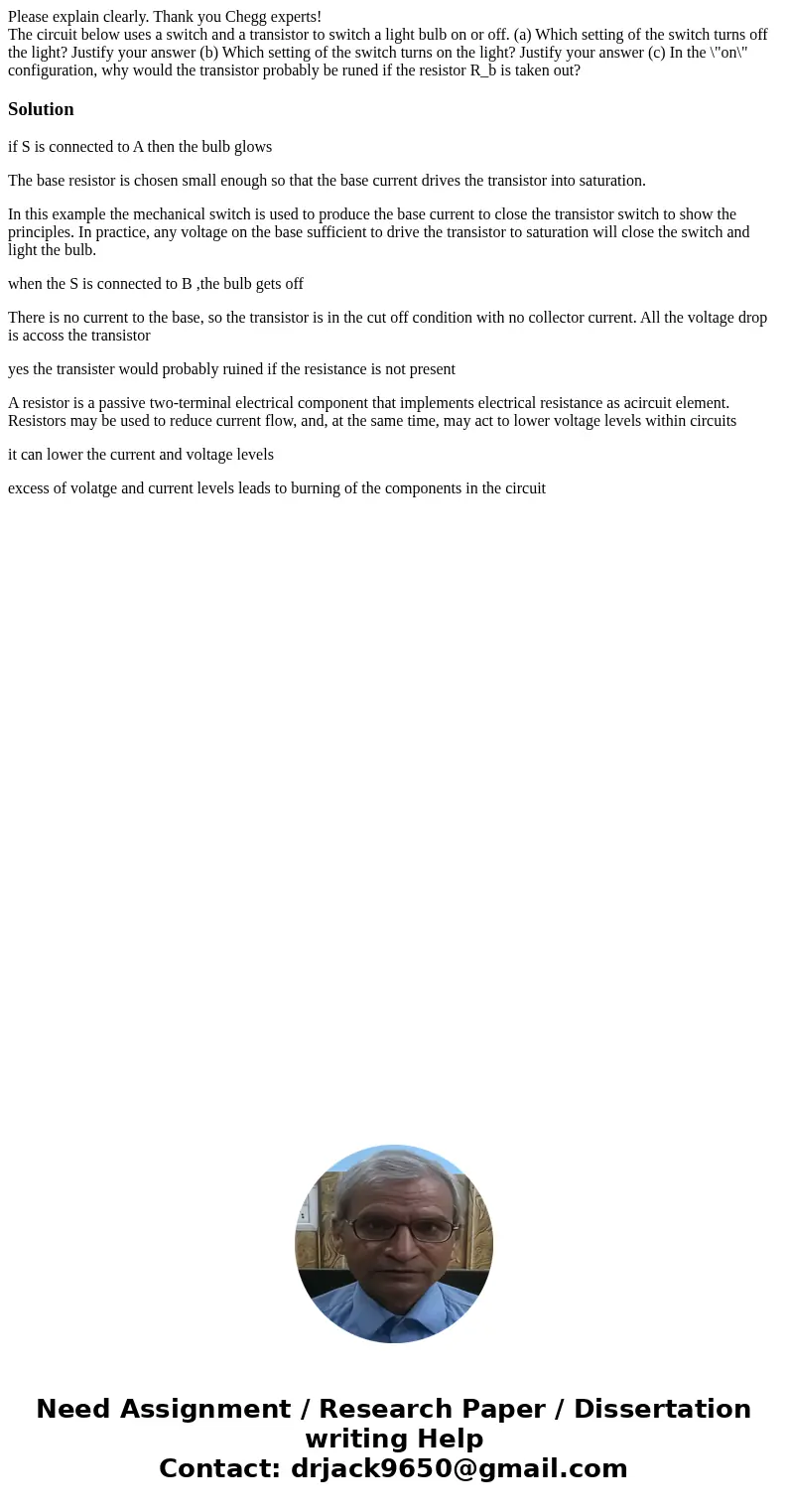Please explain clearly Thank you Chegg experts The circuit b
Solution
if S is connected to A then the bulb glows
The base resistor is chosen small enough so that the base current drives the transistor into saturation.
In this example the mechanical switch is used to produce the base current to close the transistor switch to show the principles. In practice, any voltage on the base sufficient to drive the transistor to saturation will close the switch and light the bulb.
when the S is connected to B ,the bulb gets off
There is no current to the base, so the transistor is in the cut off condition with no collector current. All the voltage drop is accoss the transistor
yes the transister would probably ruined if the resistance is not present
A resistor is a passive two-terminal electrical component that implements electrical resistance as acircuit element. Resistors may be used to reduce current flow, and, at the same time, may act to lower voltage levels within circuits
it can lower the current and voltage levels
excess of volatge and current levels leads to burning of the components in the circuit

 Homework Sourse
Homework Sourse